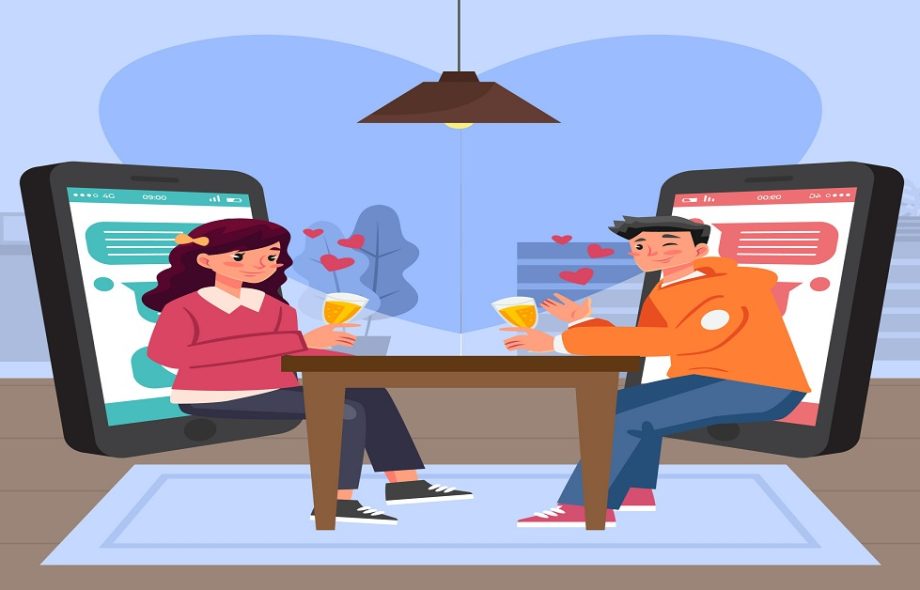In today’s digital age, dating apps have become the go-to platform for meeting new people and forming relationships. As a leading Dating App Development Company, we specialize in creating innovative and user-friendly apps tailored to meet the unique needs of modern users. Our expert developers leverage the latest technologies to build secure, scalable, and high-performance dating apps that offer personalized experiences. Whether you’re looking to develop a casual dating platform or a niche matchmaking service, our team ensures seamless functionality, intuitive design, and top-tier security to keep users engaged and coming back for more. Let us help you bring your dating app idea to life.
1. User-Centric Design: Understanding Your Target Audience
The first step in creating an intuitive UX/UI design is to understand your target audience. Dating apps serve a wide range of users with varying preferences, needs, and expectations. By segmenting your audience and conducting thorough research, you can create user personas that will guide the design process.
For example, the design for a casual dating app will differ from one targeting serious relationships. While younger users might prioritize ease of use and social media integration, older users may need clearer navigation and larger text. Understanding these nuances helps in designing an interface that resonates with your specific audience.
Key Action:
• Conduct user research and create personas to understand your target audience’s needs, expectations, and pain points.
2. Simplified Onboarding: First Impressions Matter
Onboarding is the first step in a user’s journey through your app, and it’s crucial to make it as smooth and straightforward as possible. A lengthy or complicated sign-up process can drive users away before they even experience the app.
To keep things simple, limit the number of steps required to create a profile. Allow users to sign up using existing social media accounts (such as Facebook, Google, or Instagram) to save time and reduce friction. Also, clearly communicate the value of the app during the onboarding process. Explain how the matching algorithm works, privacy policies, and the unique features that set your app apart.
Key Action:
• Keep the onboarding process short and sweet, allowing users to sign up quickly and easily with social media accounts.
3. Minimalist UI: Less Is More
When it comes to dating apps, simplicity is key. Users are often looking for efficiency and ease of use, and a cluttered, over-designed interface can make navigation confusing and frustrating.
A minimalist design is effective because it allows users to focus on the essential elements, such as profiles, matches, and messages, without being distracted by unnecessary features. Use white space to separate content and make the app feel more breathable and organized. Keep buttons and actions clear and consistent, with intuitive icons that are easy to understand.
In addition, use a color scheme that aligns with your app’s brand and creates a calm, inviting environment. For example, dating apps often use warm, romantic colors like red, pink, or soft pastels, but you can experiment with hues that reflect your target audience’s preferences.
Key Action:
• Use a minimalist design approach that removes unnecessary elements and focuses on the core features, ensuring intuitive navigation and clarity.
4. Effortless Navigation: Intuitive Layouts
Navigation is a critical component of a seamless dating app experience. A well-organized layout ensures that users can find what they’re looking for quickly and easily. Group similar actions and features together to create a logical flow, reducing the number of taps required to reach important sections of the app.
For example, common features like the home feed, profile editing, and messages should be easily accessible through a fixed bottom navigation bar or top menu. The use of intuitive icons for each section (e.g., a heart for matches, a speech bubble for messages) can further enhance ease of navigation.
Additionally, incorporate swipe gestures, which have become a hallmark of dating apps. This intuitive interaction makes it easy for users to browse through profiles and quickly decide who they’re interested in.
Key Action:
• Design an intuitive layout with easy-to-find menus and minimal steps to access core features, like matches and messages.
5. Personalization: Tailoring the Experience
One of the most compelling reasons people use dating apps is to find people who share their interests and values. Personalization is essential to create meaningful connections and make users feel understood. This can be achieved by tailoring the user experience based on profile information, preferences, and behavior.
For example, use data from the user’s profile to display relevant matches, suggest activities or events they might enjoy, and provide personalized messaging prompts. Implement algorithms that recommend potential matches based on shared interests or mutual connections.
Allow users to filter profiles by location, age, interests, or other preferences. The more personalized the experience, the more likely users are to stay engaged with the app.
Key Action:
• Incorporate personalized features that cater to individual preferences, such as customized match suggestions and content recommendations.
6. Engagement Features: Messaging and Notifications
Once users have matched with someone, effective communication becomes key to the experience. A seamless chat feature is vital in maintaining user engagement. The messaging interface should be clean, simple, and free from distractions. Offer essential features like emojis, GIFs, and multimedia sharing to make conversations more fun and expressive.
Push notifications are another critical component. Notify users about new matches, messages, or activity that requires their attention. However, be careful not to overwhelm users with too many notifications—let them customize their preferences to ensure they only receive the updates they care about.
Key Action:
• Ensure smooth and user-friendly messaging features with the ability to share content and receive timely notifications without being overbearing.
7. Profile Design: Clear and Informative
A well-designed user profile is central to the success of a dating app. It should offer enough information to help users make informed decisions about potential matches while maintaining simplicity. Clear, high-quality profile photos are essential, as they help users make quick judgments about a person’s appearance.
In addition to photos, profiles should include key details like interests, hobbies, job titles, and a short bio. This information should be easy to input, edit, and view. Consider adding fun or interactive sections, like personality quizzes or compatibility tests, to make the profile more engaging and personalized.
Key Action:
• Design profiles that provide essential information while allowing for personalization, and offer a variety of ways to express personality.
8. User Privacy and Security: Trust and Safety
Dating apps often handle sensitive personal data, so ensuring user privacy and security is paramount. Make sure users feel confident about their safety by incorporating features that protect their personal information.
Implement security features like two-factor authentication (2FA) and encryption to protect user data. Allow users to report suspicious activity or block unwanted messages. It’s also important to provide clear, transparent privacy policies and make it easy for users to control what information they share.
Key Action:
• Prioritize user privacy and security by offering clear privacy settings, encryption, and easy reporting of suspicious activity.
9. Responsive Design: Optimizing for All Devices
In today’s mobile-first world, dating apps must perform seamlessly across different devices and screen sizes. A responsive design ensures that your app looks and works great on smartphones, tablets, and other devices.
Consider designing with mobile users in mind first, ensuring that the app’s interface is optimized for small screens. The layout, buttons, and text should be large enough for easy interaction on mobile devices while maintaining visual appeal.
Key Action:
• Optimize the app for various screen sizes and devices, ensuring consistency and usability across mobile platforms.
10. Continuous Testing and Improvement
Finally, the design process doesn’t stop after launch. Continuous testing and improvement are essential for maintaining a seamless dating app experience. Use user feedback, analytics, and A/B testing to identify areas for improvement and iterate on your design. Track metrics like user engagement, retention, and conversion rates to gauge success and make data-driven design decisions.
Key Action:
• Regularly test and update the app based on user feedback and analytics to ensure a continuous improvement of the user experience.
Conclusion
Designing an intuitive UX/UI for a dating app development cost requires a careful balance of aesthetics, functionality, and user needs. By focusing on simplicity, personalization, engagement, and security, you can create an app that not only attracts users but keeps them coming back. A well-designed dating app offers a seamless experience that helps users find meaningful connections while ensuring they feel comfortable, secure, and valued.
 :
https://in.pinterest.com/devtechnosys/_created/
:
https://in.pinterest.com/devtechnosys/_created/

